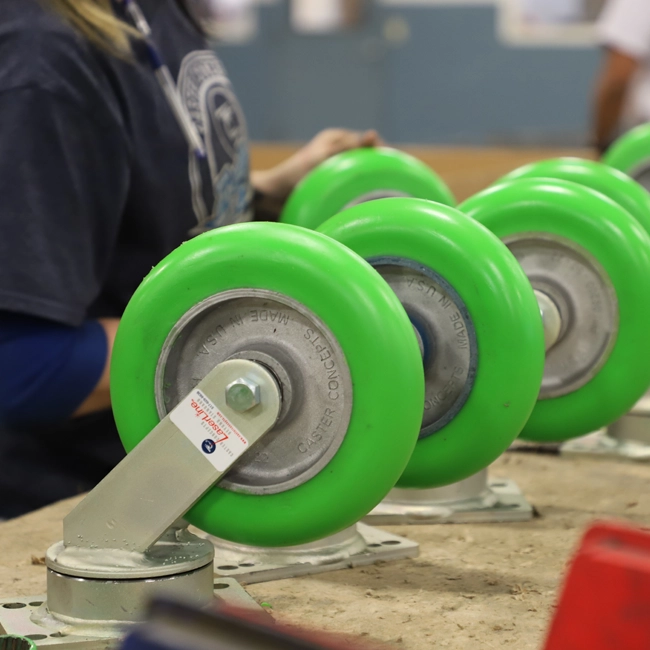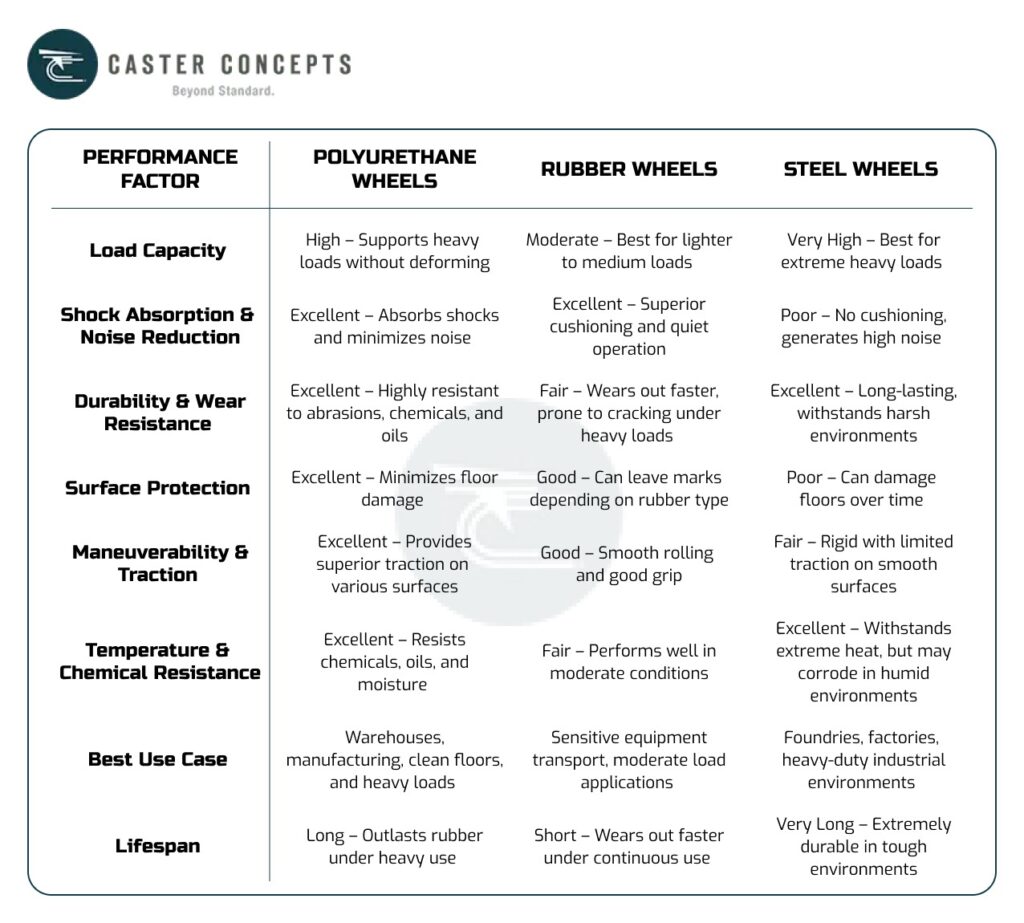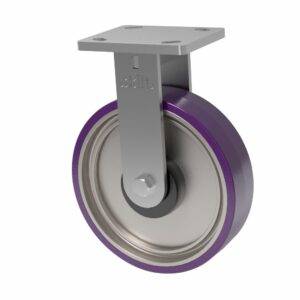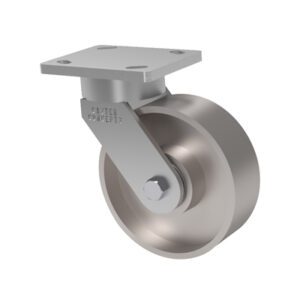


Warehouse environments require that every aspect of operations runs smoothly. To ensure this, choosing the right wheel material for your industrial application is crucial for efficiency, durability, and performance. Polyurethane, rubber, and steel wheels each offer distinct advantages and drawbacks, making the decision dependent on factors like load capacity, surface conditions, and maneuverability requirements. Understanding these differences can help you make the best choice for your operation.

Polyurethane Rigid Caster
At Caster Concepts, we are dedicated to helping your warehouse run smoothly, right down to the little details that can make a big difference. In this article, we put our expertise into every paragraph to assist your decision between polyurethane wheels versus rubber or steel wheels.
Polyurethane wheels offer an ideal balance of strength, durability, and floor protection, making them a top choice for various industrial applications. Their unique composition allows them to absorb shocks effectively, significantly reducing vibration and noise. This feature is particularly beneficial in warehouses and manufacturing facilities where minimizing workplace noise and ensuring smooth equipment operation is essential. Unlike rubber wheels, polyurethane wheels resist wear and tear exceptionally well, as they are highly resistant to chemicals, oils, and abrasions, which extends their lifespan even in demanding environments. Their superior traction on various surfaces enhances maneuverability, reducing the risk of slippage and improving overall workplace safety.
Additionally, polyurethane wheels are known for their ability to carry heavy loads without deforming, offering a solid alternative to steel wheels while maintaining a gentler impact on floors. These qualities make them a versatile and long-lasting option for businesses looking for durability without compromising on performance or floor protection.

Steel caster
are favored for their cushioning effect and ability to roll smoothly over uneven surfaces. They are particularly effective in applications where comfort and noise reduction are essential. Their softer composition absorbs shocks, making them ideal for sensitive equipment transportation. However, rubber wheels can fail under excessively heavy loads. They can experience issues such as compression set (where the rubber deforms and does not return to its original shape), excessive wear, or even chunking (where pieces of rubber break off). If overloaded, rubber wheels may flatten, develop cracks, or become unbalanced, leading to compromised performance and a shorter lifespan. This is why they are best suited for applications requiring moderate load capacities rather than extreme industrial use.
Steel wheels are built for extreme durability and high load capacities. They excel in environments that demand heavy-duty performance, such as factories, foundries, and harsh industrial settings. These wheels withstand high temperatures, sharp debris, and heavy weights without significant wear. However, they offer little to no shock absorption, which can lead to increased noise levels and potential damage to flooring surfaces. Their rigidity also makes them less suitable for applications requiring smooth maneuverability.
When it comes to load capacity, steel wheels outperform both polyurethane and rubber, making them the best option for transporting extremely heavy materials. However, polyurethane wheels provide a strong middle ground, supporting substantial weight while preserving floor conditions. Rubber wheels, while softer and more flexible, have a lower weight capacity and wear down faster under constant use.
Regarding surface protection, polyurethane wheels shine by reducing floor damage, whereas steel wheels can cause wear and tear on flooring over time. Rubber wheels also offer floor protection but may leave marks depending on their composition.
For shock absorption and noise reduction, rubber and polyurethane wheels excel due to their softer materials. Steel wheels, on the other hand, provide little to no cushioning, leading to increased noise levels and potential discomfort for workers.
Selecting the appropriate wheel material depends on your specific operational needs. Here is a comprehensive list of the factors to consider when deciding among these types of wheels:
By carefully considering factors such as load capacity, surface conditions, and operational demands, you can determine the best wheel material for your industrial application. Investing in the right wheels ensures efficiency, safety, and longevity in your workplace operations.
At Caster Concepts, we understand that details make all the difference in ensuring seamless warehouse operations. We work with you to decide what the best solution is for your needs, whether that’s polyurethane wheels, rubber, or steel. Contact us today!